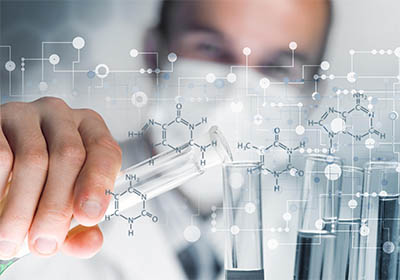- Computer-Aided Drug Design (CADD)
- DNA-Encoded Library Technology (DELT)
- Fragment-Based Screening
- High Content Screening (HCS)
-
High Throughput Screening (HTS)
- Automated HTS Platform
- Biochemical assays in Hit Characterization
-
Biophysical Assays in Hit Characterization
- BLI for Affinity-based Hit Screening
- CD Spectrometry for Protein Structure Determination
- ITC for Binding Assessment
- MS for Structure Confirmation
- MT for Binding Affinity Measurement
- NMR Spectrometry for Tareget identification and Characterization
- SPR Spectrometrys for Structure Determination
- TSA for Protein's Stability Evaluation
- Cellular assays in Hit Characterization
- Drug Repurposing
- Hit Screening
- HTS Assay Development
- HTS Compounds Libraries
- HTS Data Management
- Virtual Screening (VS)

One-stop
Drug Discovery Services
- Experienced and qualified scientists functioning as project managers or study director
- Independent quality unit assuring regulatory compliance
- Methods validated per ICH GLP/GMP guidelines
- Rigorous sample tracking and handling procedures to prevent mistakes
- Controlled laboratory environment to prevent a whole new level of success
DNA-Encoded Library Design and Synthesis
INQUIRYDNA-encoded chemical libraries are hybrid-type collections of diverse organic molecules and each of them is coupled to distinctive DNA fragments. These unique libraries are generated by iterative combinatorial synthesis and each molecule is linked to a distinct DNA tag which records its synthetic process. The designed libraries consist various novel structures that cover a wide chemical space including diversified scaffolds, which are suitable for further hit-to-lead optimization.
 Fig.1 Schematic of DNA-encoded libraries synthesis. (Verena, K.; et al. 2018)
Fig.1 Schematic of DNA-encoded libraries synthesis. (Verena, K.; et al. 2018)Design of DELs
Our chemists consider both chemistry-driven and biology-driven methods to design libraries:
Chemistry-driven library design
1. We carry out this type of libraries design by employing DNA-compatible chemical reactions and synthesis strategies.
2. Many novel and drug-like scaffolds as well as building blocks are also used in the design of DELs.
Biology-driven library design
1. We design libraries based on structural information of target types with specific biological effect to cover and expand chemical spaces of drugs or bioactive molecules.
Our Synthesis Process
BOC Sciences has developed a complete set of DELs production processes which ensure the high efficiency and quality of DNA-encoded libraries.The detailed production process is as follows:
We apply the 'split & pool' synthesis strategy to build our DNA-encoded libraries. In this approach, a building block (BB) is tagged with a DNA sequence and then a second one is added subsequently. The DNA tag is able to be lengthened with a sequence that corresponds to the next BB. At each step, BBs are added to mixtures of thousands of different tagged BBs and the libraries can grow to vast sizes quickly.
Other Services of DELs
Quality control
Aiming to monitor ligation reaction, multiple quality control approaches are applied during the process of DEL production including UPLCMS, HPLC and electrophoresis.
Automation of DEL synthesis
At BOC Sciences, we have established an automatic synthesis platform to perform the synthesis of DELs.
Our Advantages of DELs Services
- All building blocks are validated and analyzed under certain conditions to get the assessment of yields and by-product, and only building blocks which meet the standard criteria will be selected for our DEL production.
- Various quality control methods developed in-house, such as electrophoresis and quantification (by Qubit, OD, bioanalyzer and qPCR) are available to evaluate the quality of the final product.
- Our advanced automatic synthesis platform can improve the efficiency and homogeneity of parallel reactions and 'split & pool' operations, which ensures the the library quality.
- With years of accumulation of chemical knowledge, BOC Sciences has established a DNA-encoded compound library with structural diversity and high quality based on the technologies of diverse molecular building blocks.
- We leverage our unique chemistry knowledge and apply robust reactions to develop and deliver novel, customized DELs for our clients.
Reference
- Verena, K.; et al. DNA-encoded libraries - an efficient small molecule discovery technology for the biomedical sciences. Biological Chemistry. 2018, 399(7).
※ It should be noted that our service is only used for research.
Online Inquiry

